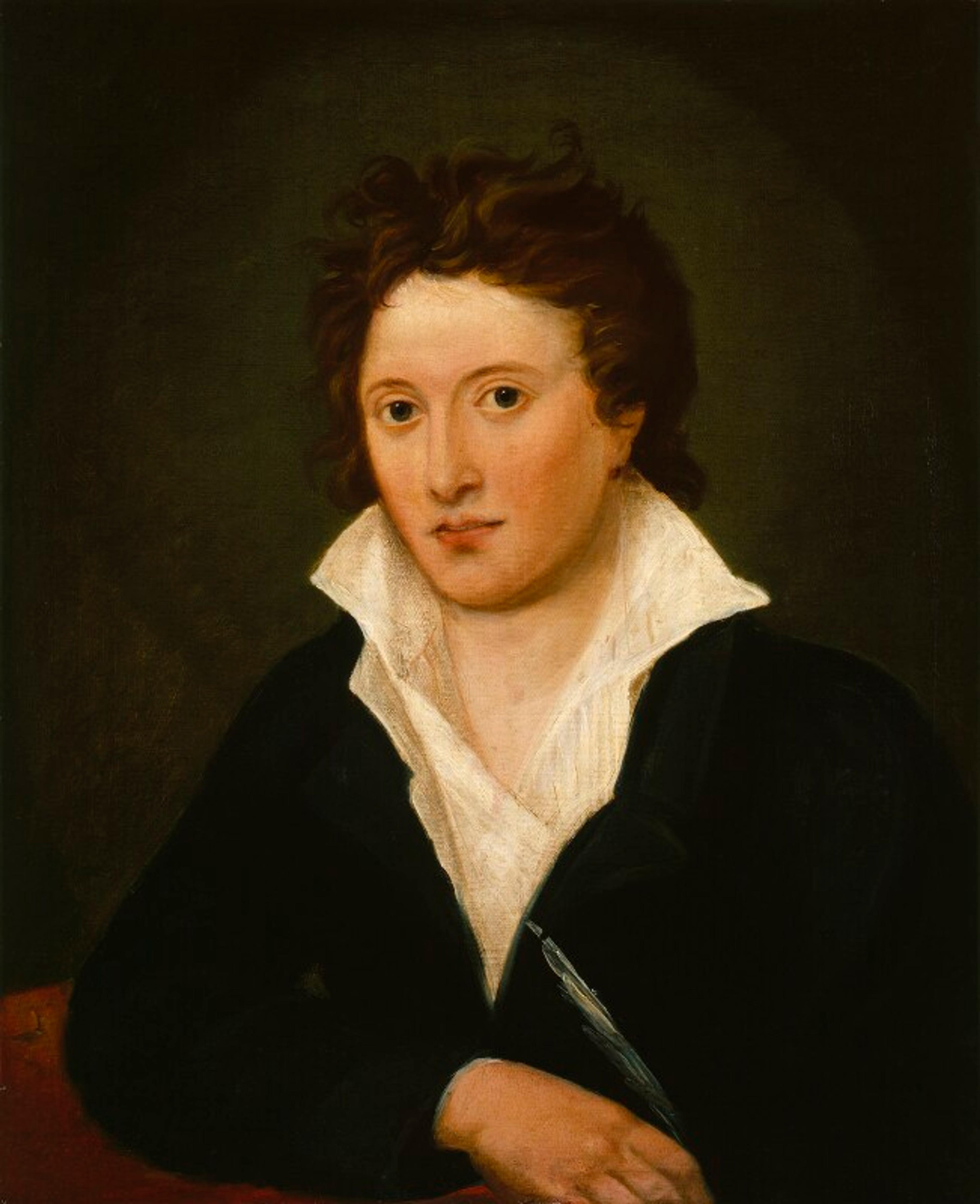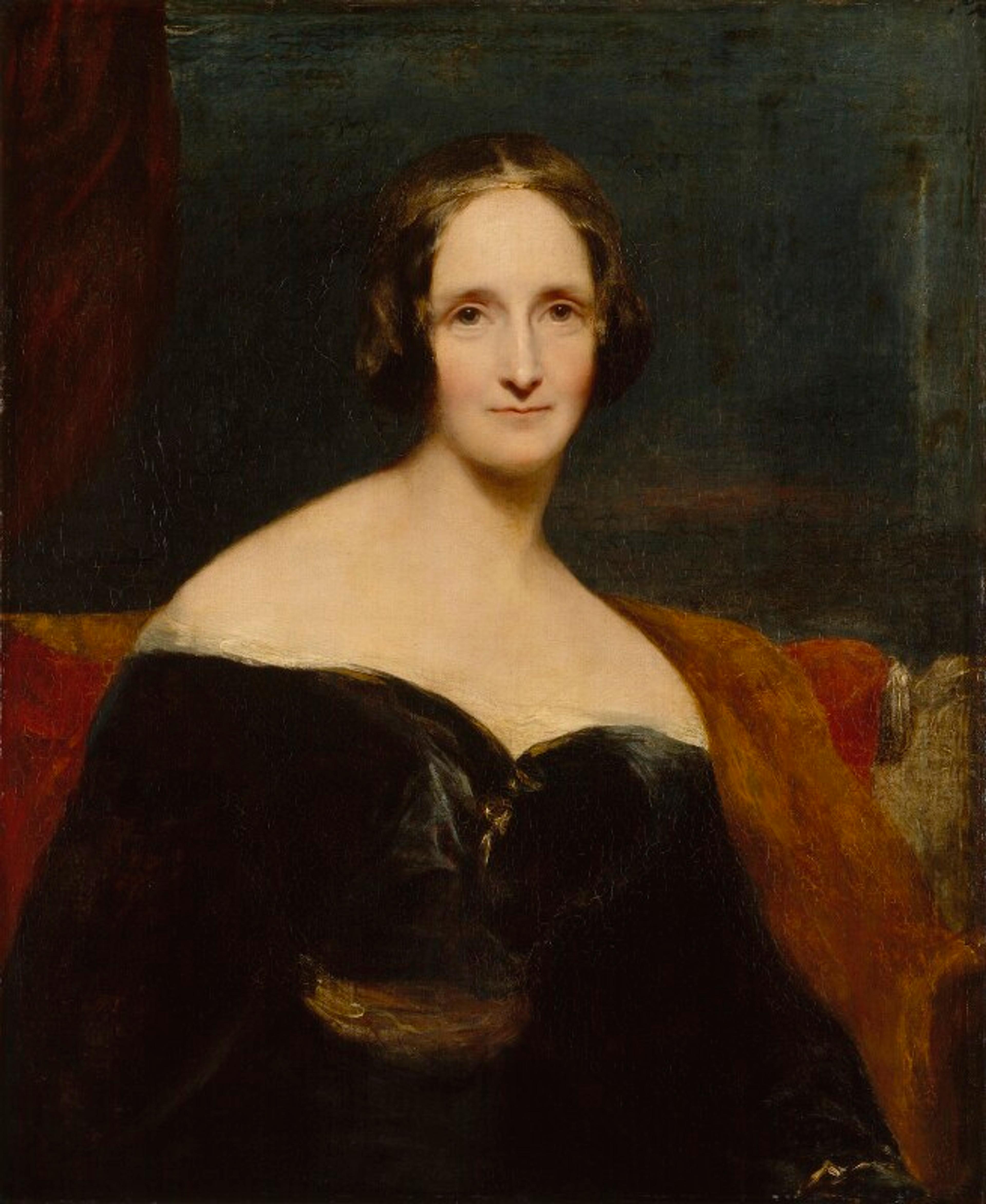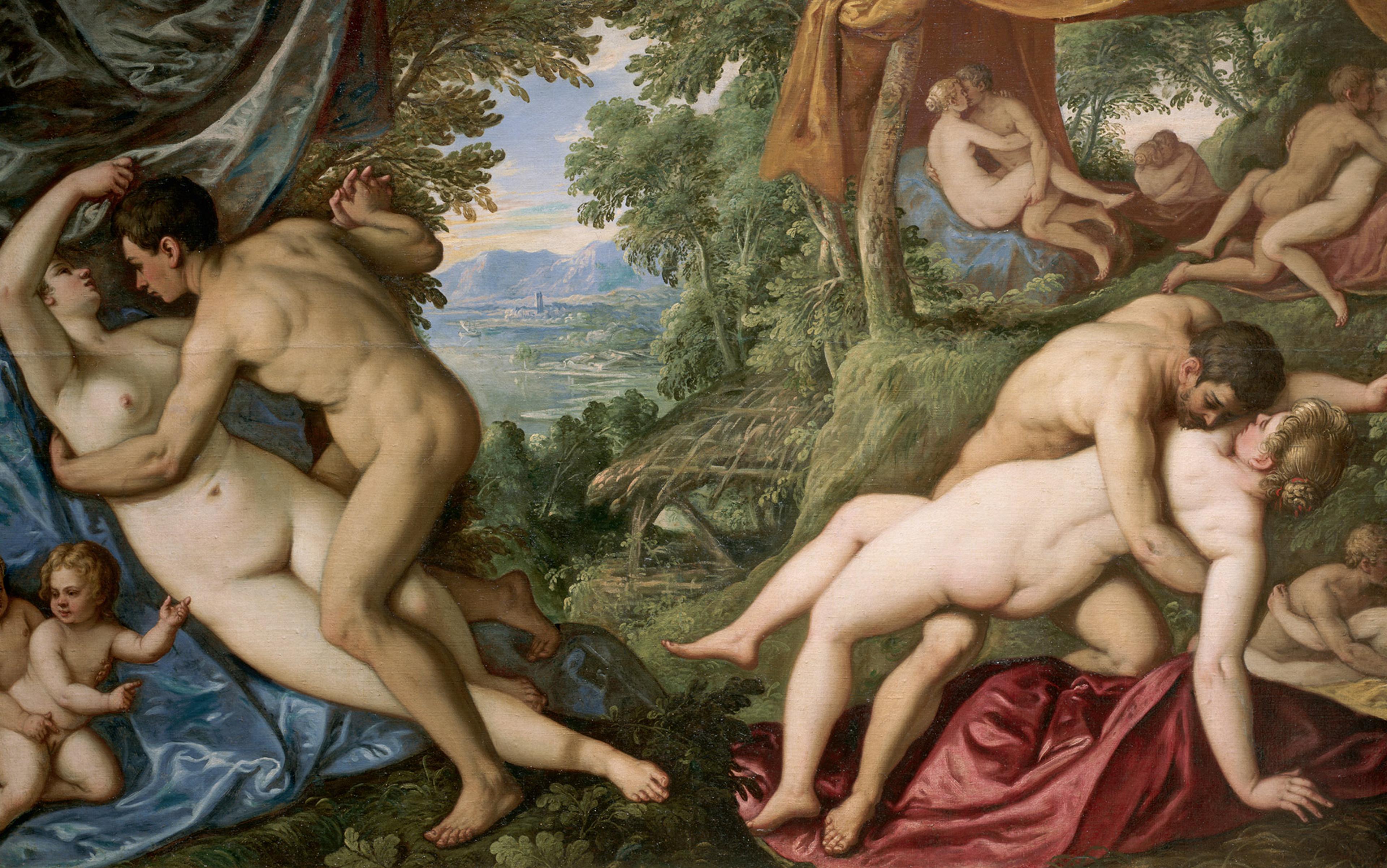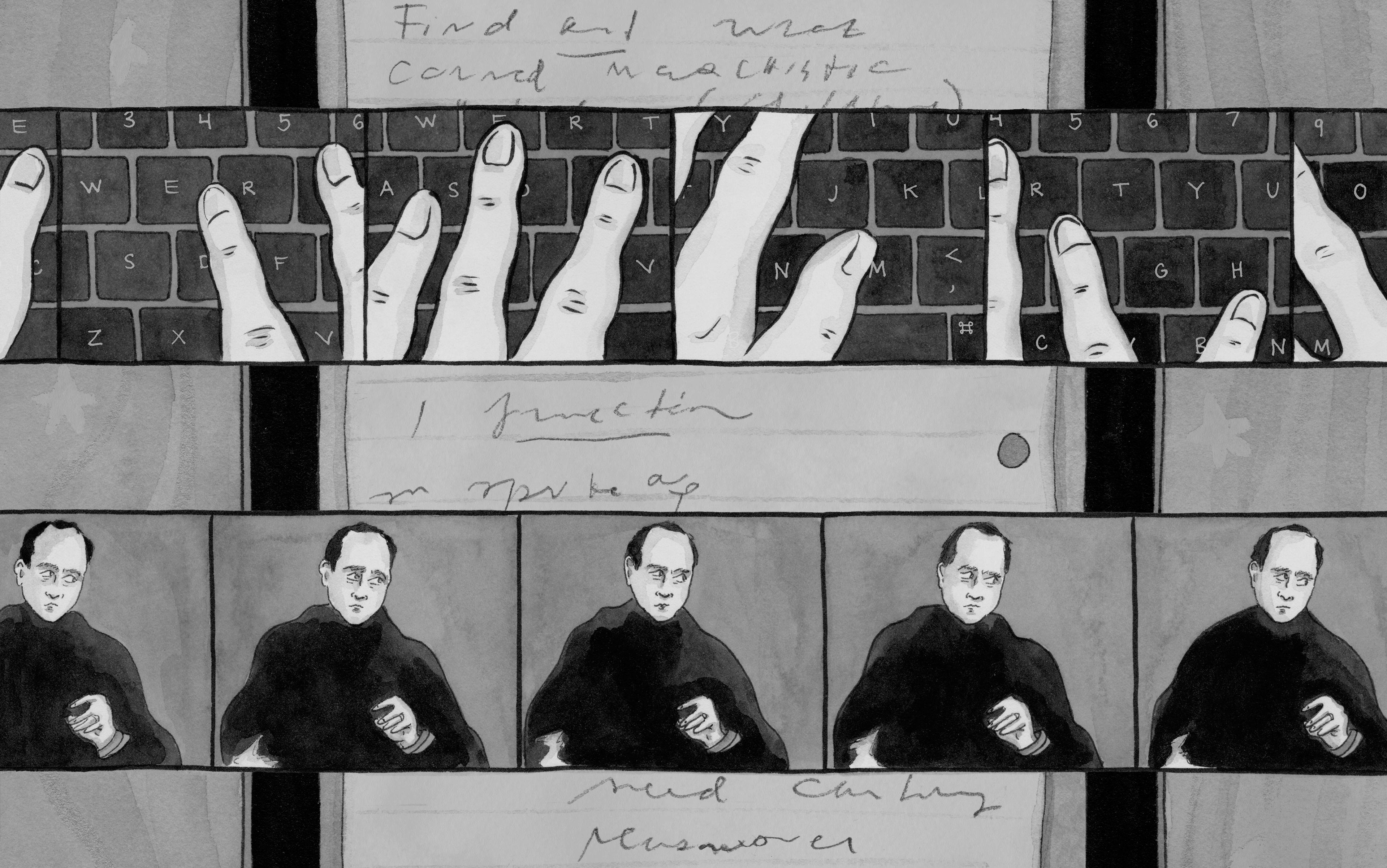In the notes for his poem Queen Mab (1813), Percy Shelley declares that ‘love is free’. This was the creed he would follow when it came to his own intimate relationships: he rejected monogamy, and tried to convince the women in his life to do the same. Not many people today would be shocked by this. Most living in Western countries have sex before they get married, and a YouGov survey in 2020 of adults in the United States found that, of those who are in a relationship, more than a quarter are non-monogamous. But free love – by which I mean the idea that both men and women should be allowed to have sex outside of marriage, and to carry on multiple relationships at once, without judgment or persecution – was not always with us. It had to be invented. And we can say quite precisely when this happened.

Percy Bysshe Shelley (1819) by Amelia Curran. Courtesy the National Portrait Gallery, London
People have always had sex outside of their monogamous marriages, of course. And men, in particular, never saw much need to hide their behaviour. But for centuries in Europe, nobody openly defended, and few dared to imagine the possibility of, greater sexual freedom for both men and women; and no one discussed alternative sorts of relationships. There was one exception: a few authors defended male polygamy, as sanctioned in the Bible. The 17th-century poet and thinker John Milton had done so quietly, in the pages of his voluminous Investigations into Christian Doctrine, while his German contemporary Johann Leyser had written and preached prodigiously on the subject. Then, quite suddenly, all that changed. People began to openly challenge both marriage and monogamy. Free love was invented in 1792, the year Shelley was born. How did it happen?
It started with the events in France. When the Revolutionaries challenged the absolute power of King Louis XVI, they energised radicals, and terrified conservatives, by questioning all traditional values. Suddenly, sexual morality was up for debate alongside monarchist government and the Christian religion. In practice, the Revolutionaries made only modest changes to existing laws governing sexuality. They liberalised divorce and quietly decriminalised same-sex sex. However, beyond its specific accomplishments, the French Revolution had an electric impact on radical thinking around the world, and inspired people to reconsider the values of their own societies.
At the time, Britain’s radical intellectuals were mostly a tight-knit group, centred around the publisher Joseph Johnson. His stable of authors gathered at his London home to eat, drink, and debate the issues of the day. One of its brightest lights was Mary Wollstonecraft. The granddaughter of a successful weaver, Wollstonecraft came from a family that had quickly gone up the social ladder and, as the child of a shiftless, alcoholic father, she watched her family come down just as fast. Forced to earn a living without formal education, she tried her hand at running a school and working as a governess before making her way to London in 1787, determined to become a writer. Charismatic, intellectually voracious, she blazed in conversation, fascinating and intimidating the mostly male authors who made up Johnson’s circle. And she made questions of gender and sexuality a major topic for debate.

Mary Wollstonecraft (c1797) by John Opie. Courtesy the National Portrait Gallery, London
Wollstonecraft was an enthusiastic supporter of the French Revolution. She wrote A Vindication of the Rights of Men (1790), defending the Revolutionaries from the attacks of Edmund Burke and other conservatives. She followed this with her feminist masterpiece A Vindication of the Rights of Woman (1792), in which she attacked the well-established double standard whereby male libertinism is tolerated while women’s lives are destroyed by any sexual transgression. The solution she proposed was greater chastity for both men and women. But her central purpose was to make the case for female education. She said that only once women are equal companions to men can marriage become a genuine partnership rather than a form of servitude.
Beyond her actual arguments, Wollstonecraft encouraged people to broaden their thinking about rights and liberty. She showed that intimate relationships were political, and challenged her readers to consider how the ideals of the Revolution could apply to the private sphere. If there was, as she suggested, a parallel between political and domestic tyranny, it was hard to escape the conclusion that we must also transform relations between the sexes. In this, she inspired others to develop arguments that went beyond her own – and she would set an example in her personal life as well.
Another of the authors whom Johnson published, Thomas Holcroft, showed the influence of Wollstonecraft’s feminism in his novel Anna St Ives (1792), as well as that of the French Revolution’s most radical ideas. Though his book was published the same year as A Vindication of the Rights of Woman, Holcroft had had a preview of Wollstonecraft’s arguments, which he heard her discuss at Johnson’s dinners. Unlike his best friend William Godwin, who was put off by Wollstonecraft’s domineering conversational style, Holcroft was entranced by her. He would later write her a gushing fan letter, calling her ‘the philosopher that traces[,] compares and combines facts for the benefit of future times.’
Holcroft’s novel dramatises Wollstonecraft’s guiding ideal: that of an educated woman who cultivates a friendship with an equally enlightened man, based on reason and shared values. The novel’s main character, Anna, spends her time in conversation with her friend Frank, imagining what a perfect society would look like. They decide that any future utopia must abolish private property. Coke, a rake who is trying to seduce Anna, provocatively suggests a possible entailment of this view: since marriage is nothing but a form of property, perhaps that should be abolished as well? To help Anna live in conformity with her ideals, he obligingly offers to have sex with her. Frank and Anna concede the power of his argument – marriage really is an objectionable form of property – though Anna demurs on sex with Coke. She and Frank decide that, since women’s reputations are destroyed by sexual transgression, the abolition of monogamy will have to wait till society has become more enlightened. Though Holcroft’s tedious and didactic novel makes for hard reading today, Wollstonecraft appreciated its kinship with her own ideas, and wrote a generous review of it for Johnson’s monthly journal, the Analytical Review.
Sex is something Godwin doesn’t personally enjoy, and he doesn’t think other people should either
Holcroft may have put the equation of communism and free love into the mouth of his villain, but it was an idea he took seriously and discussed with Godwin, who was at that time writing his tract, An Enquiry Concerning Political Justice (1793) – essentially, a defence of philosophical anarchism. Pressed by Holcroft, Godwin added a section on intimate relationships. In it, he made two arguments. First, he contends that marriage is an objectionable form of property, held over another human being – he called it ‘the most odious of all monopolies’. Second, marriage is a promise, and Godwin thinks that enforcing promises is inherently unjust. People should be free of all external bonds on their freedom, both political and social, with the right to change their minds whenever they think it is right to do so.
Godwin concludes that marriage should be abolished, and monogamy along with it. People should be free to have as many relationships as they want. He makes it clear, however, that sex is something he doesn’t personally enjoy, and doesn’t think other people should either. He says that, in a society where government and property are absent, humans would develop into more refined beings who had no need for ‘sensual intercourse’. If Godwin was the first person to openly defend polyamory, he also managed to take all the fun out of it.
Godwin’s treatise was published in 1793, and became a surprise bestseller. His attack on marriage became infamous, and a whole genre of novels emerged in which seductive, ruthless men, meant to represent Godwin, used his arguments to coax virtuous ladies into bed. Godwin’s friends, who knew what a prude he was, thought this was hilarious.
At the end of 1792, Wollstonecraft moved to France to see the Revolution first-hand. There she fell in love with the caddish American adventurer Gilbert Imlay. Imlay had at the time just completed a novel that echoed the principal themes of the Vindication. The Monthly Review periodical praised it for drawing a parallel between ‘the rigour of matrimonial institutions’ and ‘a state of oppressive vassalage’. In 1794, Wollstonecraft gave birth to Fanny, a daughter by Imlay. True to his anti-matrimonial principles, Imlay abandoned her not long after Fanny’s birth, leading Wollstonecraft to return to England, where she began a new relationship – with Godwin. The two could not have been more different – she was passionate and charismatic; he austere and preacherly – but they made it work. (It helped that they kept separate apartments.) Wollstonecraft was soon pregnant again, and in order to spare their child the stigma of illegitimacy, they decided to get married. The philosophical inconsistency of the move made Godwin squirm. An acquaintance reported that he ‘winces not a little on receiving the usual congratulations’ over his wedding.
Tragically, Wollstonecraft died of puerperal fever shortly after her daughter, Mary Wollstonecraft Godwin, was born. She contracted it during childbirth from her surgeon’s unwashed hands. After her death, Godwin had two works published that would, as much as the Vindication, shape Wollstonecraft’s image among her contemporaries: Memoirs of the Author of A Vindication of the Rights of Woman (1798), his short account of her life, and a posthumous edition of her writings that included the text of her unfinished novel, Maria; or, The Wrongs of Woman (1798). Godwin intended his memoir as a defence of Wollstonecraft’s reputation but, as such, it could not have been more inept. It publicised her unrequited passion for the painter Henry Fuseli, as well as her affair with Imlay, and revealed that she’d been unmarried when her daughter Fanny was born.
Her critics twisted Wollstonecraft’s feminism into a rejection of monogamy. As one reviewer said: ‘We must observe, that Mary’s theory, that it is the right of women to indulge their inclinations with every man they like, is so far from being new, that it is as old as prostitution.’ They found further evidence in the unfinished novel. It seethes with outrage at the plight of her heroine, whose husband abuses her and locks her away in a psychiatric hospital. ‘Marriage,’ says the protagonist, ‘has bastilled me for life.’ The religious writer Hannah More in 1799 called The Wrongs of Woman a ‘vindication of adultery’.
‘Let every female live perfectly uncontrolled by any man … let her choose and change her lover as she please’
Shelley was in his late teens when he first encountered the works of Wollstonecraft and Godwin, He had a prodigious talent for poetry, the looks of an angel, and an insatiable appetite for controversy. As his widow later attested, he was ‘like a spirit from another sphere’. Kicked out of Oxford for his open atheism, he had allied himself with various radical political causes. His reading of Wollstonecraft and Godwin convinced him, if he needed convincing, that monogamy was not for him. In 1812, he declared that he ‘retained no doubts of the evils of marriage, – Mrs Wollstonecraft reasons too well for that.’ And he used ‘the Godwinian plan’ as a short-hand term for free love.

Mary Shelley (c1831-40) by Richard Rothwell. Courtesy the National Portrait Gallery, London
In 1812, on learning, to his surprise, that Godwin was still alive, Shelley sought out the old philosopher. Later that same year, he met Godwin’s daughter Mary, then 15 years old, and he was immediately entranced. Shelley, who was married at the time, spent his days in philosophical conversation with Godwin, then snuck away in the evenings with Mary. She took him to her favourite refuge: Old Saint Pancras churchyard, where her mother was buried. They may have first had sex on Wollstonecraft’s grave.
Shelley naturally assumed that Mary, as the child of the two great antagonists of conventional marriage, would share his hatred for monogamy. But while he convinced her to run away with him, they had different ideas about what their relationship should look like.
Shortly after they left England, Shelley insisted Mary read one of his favourite books, The Empire of the Nairs; or, The Rights of Women (1811). It was written by the most extreme of Wollstonecraft’s free-love disciples, the eccentric aristocrat James Henry Lawrence. Born in Jamaica in 1773 to a wealthy planter family, Lawrence was a friend of Godwin’s, whom he had encountered many times at the British Museum. The novel, which pays tribute to Wollstonecraft in its title, is a utopian depiction of the Nair people of Malabar, on the southwestern coast of India. Lawrence portrays the Nairs as devotees of unrestricted sexual liberty, and calls for the adoption of the Nair system more widely. In his novel’s introduction, Lawrence borrows Wollstonecraft’s attack on the double standard of chastity, while neatly inverting her conclusion. ‘Let every female,’ he declares, ‘live perfectly uncontrolled by any man, and enjoying every freedom, which the males only have hitherto enjoyed; let her choose and change her lover as she please.’ The novel’s closing words are a salute to Wollstonecraft: ‘Success to the rights of women!’ One reviewer noted: ‘The author adopts the principles of Mrs Wolstoncroft [sic], but his plan is more extensive and consistent.’
Shelley wrote Lawrence fawning letters, calling himself ‘a perfect convert to its doctrines’. Mary was less impressed, and Shelley never won her over to his ideal of free love. She resisted his attempts to engineer an affair with his friend Thomas Hogg, and she, rather uniquely, maintained a relationship with the sex-addicted poet Lord Byron that was entirely platonic.
Shelley’s opposition to monogamy was rooted in a complex and original philosophy of love. And whether or not he realised it, his view was much closer to Wollstonecraft’s than it was to those of his other heroes, Godwin and Lawrence. He rejected mere promiscuity, as he said in a review of Hogg’s novel, The Memoirs of Prince Alexy Haimatoff (1813). Hogg adored Shelley, and the book was a clumsy attempt to fictionalise Shelley’s ideals – as Hogg understood them. But Shelley wrote that he could not regard the novel’s endorsement of ‘promiscuous concubinage without horror and detestation’. Shelley did not think sex could be divorced from love, and he saw love in elevated, indeed spiritual, terms. He believed we are moved to love by the beauty we see in others – be it ‘in thought, action, or person’. This doctrine was inspired by Plato’s Symposium, which Shelley devoted a summer to translating in 1818. In Plato, he found confirmation of Wollstonecraft’s idea that true love represents a partnership of equals. For the poet, there was something almost supernatural about such a union. He says: ‘[W]e would that another’s nerves should vibrate to our own, that the beams of their eyes should kindle at once and mix and melt into our own, that lips of motionless ice should not reply to lips quivering and burning with the heart’s best blood.’ Sex, he believed, was a natural and integral part of this mystical union. When we are in love, physical passion irresistibly follows. He condemned chastity as ‘a monkish and evangelical superstition’.
Wollstonecraft also recoiled from promiscuity, something to which Imlay was only too devoted. Yet, as the birth of Fanny revealed, she gave up the doctrine of chastity she’d advocated for in the Vindication, even coming to view it with disdain. While she was in Paris, a Frenchwoman, trying to impress Wollstonecraft by (she thought) echoing her own views back to her, told the author that she saw no need to engage in physical affairs. Wollstonecraft replied tartly: ‘Tant pis pour vous.’ (‘The worse for you.’)
Wollstonecraft, like Shelley, believed that an ideal relationship was born from a union of romantic love and physical passion. She too saw it in almost mystical terms. She told Imlay that he could never know ‘the ineffable delight, the exquisite pleasure, which arises from a unison of affection and desire, when the whole soul and senses are abandoned to a lively imagination, that renders every emotion delicate and rapturous.’ For her, it was this fusion of love and sex that alone could provide ‘the distinctive characteristic of genius, the foundation of taste, and of that exquisite relish for the beauties of nature, of which the common herd of eaters and drinkers and child-begeters, certainly have no idea.’ Shelley could not have put it better.
Wollstonecraft refused to indulge the women who assumed that she and Godwin had an open relationship
Shelley thought that his Platonic philosophy of love implied a rejection of sexual exclusivity. We fall in love with beauty wherever we perceive it, indeed we cannot resist doing so, and beauty can be found in many different people. Thus, love must be free of ‘constraint’, meaning it must be non-exclusive. Shelley says that while love in ‘its usual signification involves selfish monopoly,’ true love ‘withers under constraint: its very essence is liberty: it is compatible neither with obedience, jealousy, nor fear.’ And because sex and love are inseparable, any true lover of beauty must be sexually polyamorous as well.
Wollstonecraft took a different view. She certainly accepted that love did not always last a lifetime. Before moving to France, she joked: ‘At Paris, indeed, I might take a husband for the time being, and get divorced when my truant heart longed again to nestle with its old friends.’ Then, after Imlay returned to England and settled in with another woman, she proposed that she, he and his mistress all live together in a single household. They got as far as looking at houses together before Imlay’s new companion called off the plan. But Wollstonecraft’s admirer, the count Gustav von Schlabrendorf, who tried (unsuccessfully) to seduce her in Paris while she was involved with Imlay, complained (accurately) that ‘she was of opinion that chastity consisted in fidelity and that it was unchaste to associate with two [people] at a time.’ Wollstonecraft also refused to indulge the women who assumed, based on their writings, that she and Godwin had an open relationship.
Shelley went much further than Godwin or Lawrence ever did in putting his ideals into practice. He tried more than once to create a community of like-minded people practising some form of open sexuality. His most famous experiment of this sort involved Byron, Mary, and Mary’s half-sister, Claire Clairmont, who all spent a summer together in Switzerland in 1816. Clairmont, who’d followed the Shelleys when they eloped, initially subscribed to Percy’s views on love, and she maintained an uncomfortably close, possibly sexual, relationship with her brother-in-law. Hogg referred to Shelley and ‘his two Wives’ – a remark Clairmont recorded in her journal. Clairmont seduced Byron, drawing him into their circle. Byron’s physician, John Polidori, also joined the group, though his hapless attempts to seduce Mary left him with nothing more than a sprained ankle.
Though the group’s time together produced great literature, most notably Frankenstein (1818), on a personal level, it didn’t work out. Clairmont became pregnant with Byron’s daughter, Allegra. Byron spurned Clairmont, took custody of their daughter, then abandoned her to a convent. Tragically, Allegra died in 1822, only five years old. Many years after Shelley and Byron had died, Clairmont wrote a withering account of the time she spent with them. ‘Under the influence of the doctrine and the belief of free love,’ she says, ‘I saw the two first poets of England … become monsters of lying, meanness[,] cruelty and treachery.’
Shelley died in 1822 and, in Britain, his ideas on free love were mostly forgotten as the country lurched towards the conservatism of the Victorian era. What we now know as the Free Love movement began in the US in the 1850s, and was shaped by the ideas of the French socialist Charles Fourier and the anarchist Josiah Warren. The Free Lovers’ objectives were closer to those of Wollstonecraft than to Shelley. They sought to give women easier access to divorce and birth control, but mostly left the norm of monogamy unchallenged. Shelley’s more radical ideas would have to wait another century to find a mainstream audience. Not until the sexual revolution of the 1960s did radical groups like the Weathermen turn ‘smash monogamy’ into a rallying cry, making free love an integral part of the counterculture.
The 21st century has taken non-monogamy mainstream. And there are plenty of options: from polyamory, to swinging, to friends with benefits, to something called relationship anarchy, the structure of which ‘is the lack of structure itself’ – whatever that means. The relative merits of these choices are discussed openly, indeed endlessly, in the media and online. Shelley would have undoubtedly surveyed this bewildering landscape with some pride. But what would Wollstonecraft have made of it all? It is hard to say. Perhaps she would, at the very least, view it with the same equanimity that she ultimately found in dealing with Imlay’s compulsive philandering. Realising he was never going to change, she told him, simply: ‘Be happy!’






